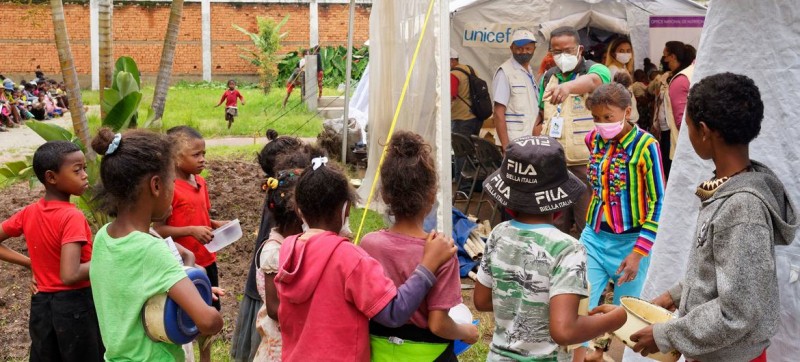More than 7,900 people are currently being cared for at shelter sites in the cyclone-affected areas of Madagascar. Humanitarians are continuing to support Madagascar in the wake of Cyclone Batsirai which hammered the island nation this past weekend, the UN said on Thursday. The storm left 92 people dead and has affected another 112,000, the UN humanitarian affairs office, OCHA, wrote on Twitter. Some 17,000 homes were damaged.
Latest on Cyclone #Batsirai
– 92 people dead
– 112K people affected
– 17K houses damagedIn #Madagascar, humanitarians are supporting the government-led response by providing food, clean water, health care services and more.
— UN Humanitarian (@UNOCHA) February 10, 2022
Additional support
Speaking in New York, UN Spokesperson Stéphane Dujarric told journalists that emergency response teams are deploying to the hardest-hit areas, in support of the Government-led response.
“Additional staff from the UN and NGOs have landed in Madagascar to support relief efforts, thanks to the European Union, which has facilitated the necessary humanitarian air bridge,” he said.
UN agencies, including the World Food Programme (WFP), as well as their aid partners have been ramping-up response in close coordination with Government counterparts.
Second deadly storm
Cyclone Batsirai struck the eastern coast of Madagascar late on Saturday, making it the second deadly storm in just two weeks, following the passage of Cyclone Ana in the north.
WFP were on the ground providing emergency assistance within hours.
In a report published on Sunday, Martina Azzalea, head of the WFP office in Manakara, recalled the horror.
“Everything was shaking. It felt like claws were pulling the roof. I heard metal sheets ripped from the roofs of nearby houses bang against my door,” she said in a voice message. “Power lines were cut and the whole city was left completely in the dark.”
Food, protection and medicine
In addition to hot meal distributions by WFP, Mr. Dujarric said the UN Children’s Fund (UNICEF) and sister agency the UN sexual and reproductive health fund, UNFPA, have been providing protection activities.
Health partners have sent essential medicine, emergency health and first aid kits, mosquito nets, and COVID-19 prevention materials to the areas affected by the cyclone, he added.
They have also set up emergency medical posts at the temporary accommodation sites for displaced people.
UNICEF and partners working in water, sanitation and hygiene have delivered kits to affected areas, while others are procuring rehabilitation kits for households, health facilities and schools.
Meanwhile, communication with communities affected by the crisis is being strengthened, including through the mobilization of volunteers and community partners.



